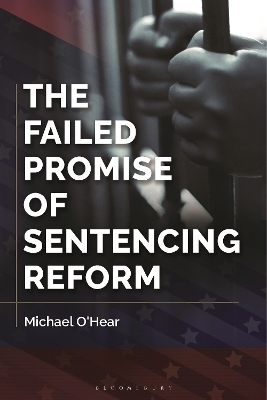
The Failed Promise of Sentencing Reform
Seiten
2024
Bloomsbury Publishing USA (Verlag)
979-8-7651-2061-3 (ISBN)
Bloomsbury Publishing USA (Verlag)
979-8-7651-2061-3 (ISBN)
Despite 15 years of reform efforts, the incarceration rate in the United States remains unprecedentedly high. This book provides the first comprehensive survey of these reforms and explains why they have proven to be ineffective.
After many decades of stability, the imprisonment rate in the United States quintupled between 1973 and 2003. Since then, nearly all states have adopted multiple reforms intended to reduce imprisonment, but the U.S. imprisonment rate has only decreased by a paltry 2 percent. Why have American sentencing reforms since 2000 been largely ineffective? Are tough mandatory minimum sentences for nonviolent drug offenders the primary reason our prisons are always full? This book offers a fascinating assessment of the wave of sentencing reforms adopted by dozens of states as well as changes at the federal level since 2000, identifying common themes among seemingly disparate changes in sentencing policy and highlighting recent reform efforts that have been more successful and may point the way forward for the nation as a whole.
In The Failed Promise of Sentencing Reform, Michael O'Hear exposes the myths that American prison sentencing reforms enacted in the 21st century have failed to have the expected effect because U.S. prisons are filled to capacity with nonviolent drug offenders as a result of the "war on drugs" or because of new laws that took away the discretion of judges and corrections officials. O'Hear then makes a convincing case for the real reasons sentencing reforms have come up short: because they exclude violent and sexual offenders, and because they rely on the discretion of officials who still have every incentive to be highly risk-averse. He also highlights how overlooking the well-being of offenders and their families in our consideration of sentencing reform has undermined efforts to effect real change.
After many decades of stability, the imprisonment rate in the United States quintupled between 1973 and 2003. Since then, nearly all states have adopted multiple reforms intended to reduce imprisonment, but the U.S. imprisonment rate has only decreased by a paltry 2 percent. Why have American sentencing reforms since 2000 been largely ineffective? Are tough mandatory minimum sentences for nonviolent drug offenders the primary reason our prisons are always full? This book offers a fascinating assessment of the wave of sentencing reforms adopted by dozens of states as well as changes at the federal level since 2000, identifying common themes among seemingly disparate changes in sentencing policy and highlighting recent reform efforts that have been more successful and may point the way forward for the nation as a whole.
In The Failed Promise of Sentencing Reform, Michael O'Hear exposes the myths that American prison sentencing reforms enacted in the 21st century have failed to have the expected effect because U.S. prisons are filled to capacity with nonviolent drug offenders as a result of the "war on drugs" or because of new laws that took away the discretion of judges and corrections officials. O'Hear then makes a convincing case for the real reasons sentencing reforms have come up short: because they exclude violent and sexual offenders, and because they rely on the discretion of officials who still have every incentive to be highly risk-averse. He also highlights how overlooking the well-being of offenders and their families in our consideration of sentencing reform has undermined efforts to effect real change.
Michael O'Hear is a professor of law at Marquette University Law School.
Figures and Tables
Acknowledgements
Introduction: An Era of Treading Water
Chapter 1: The Great U.S. Imprisonment Boom, 1973-2000
Chapter 2: War on Drugs: Escalation and (Equivocal) De-Escalation
Chapter 3: The Early Release "Revolution"
Chapter 4: Justice Reinvestment: Dominant Reform Model of the Treading Water Era
Chapter 5: Federal Sentencing in the Age of Bush and Obama
Chapter 6: Sentencing in the Supreme Court
Chapter 7: California: Is the Glass Half Empty of Half Full?
Chapter 8: Conclusion: Looking Back, Looking Ahead
Notes
Index
| Erscheinungsdatum | 09.02.2024 |
|---|---|
| Verlagsort | New York |
| Sprache | englisch |
| Maße | 156 x 235 mm |
| Themenwelt | Recht / Steuern ► EU / Internationales Recht |
| Recht / Steuern ► Strafrecht ► Kriminologie | |
| Recht / Steuern ► Strafrecht ► Strafverfahrensrecht | |
| Sozialwissenschaften ► Politik / Verwaltung | |
| ISBN-13 | 979-8-7651-2061-3 / 9798765120613 |
| Zustand | Neuware |
| Haben Sie eine Frage zum Produkt? |
Mehr entdecken
aus dem Bereich
aus dem Bereich
wie wir unsere Mimik und verborgene Körpersignale entschlüsseln
Buch | Hardcover (2022)
Droemer (Verlag)
CHF 27,95


